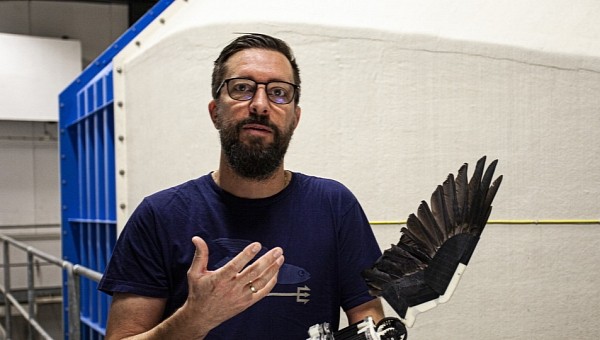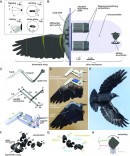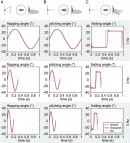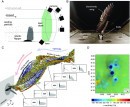As we’re starting to get used to the idea of unmanned drones dropping deliveries on a regular basis, scientists are already working on changing them. How about watching a drone flap its wings on its way to your doorstep? Far from “robotic birds,” flapping drones could use similar techniques as actual birds to improve their performance.
It’s fascinating to see how, even to this day, nature continues to be a major inspiration for developing the latest mobility technology. Last year, the Vision 60 quadrupedal unmanned ground vehicle (aka a robot dog) got a tail, so that it could become an amphibious dog. Of course, the high-tech interpretation of that concept borrowed from the natural world meant that the tail itself would be autonomous, powered by a dedicated power source, and able to propel the robot at 3 knots (3.4 mph/5.4 kph) in water.
Wings have even more potential than tails, and the idea of using them as a source of inspiration for all kinds of mobility applications isn’t new. But a recent research project takes it to the next level, by studying the potential benefits for future flapping drones.
Anyone can observe the way that birds fly, but understanding all of the mechanisms and the ability to replicate them is far more complex than we can imagine. For example, birds tend to flap their wings horizontally during slow flights, even though this requires more energy. The reason seems to be that it helps create enough force to stay in the air and keep moving forward.
This is just one of the observations that could potentially be applied for flapping drones as well. A recent study led by the Lund University in Sweden focuses on precisely that – the advantages of wing folding and stroke tilting for flapping flight. And the way to analyze these benefits was to come up with a robotic wing that could undergo different tests.
Natural observation has its obvious limits, while a robotic wing that mimics that of an actual bird can be tested extensively. Christoffer Johansson, a biology researcher at Lund University, and one of the study’s authors, explains that the robotic wing is even more similar to real bird wings, compared to previous robots, but at the same time, it goes beyond that, by being able to flap in unnatural ways as well.
Just like aircraft systems, the robotic wing has undergone wind tunnel testing, to discover and understand the most efficient movement patterns.
What’s interesting about this research is that it doesn’t just benefit drone technology, but natural science as well. These tests can be used to understand the impact of various factors on bird migration – the more we know about birds, the more we can do for them. It’s like a nice way of giving back, after using nature’s intelligence to improve our own technology.
Wings have even more potential than tails, and the idea of using them as a source of inspiration for all kinds of mobility applications isn’t new. But a recent research project takes it to the next level, by studying the potential benefits for future flapping drones.
Anyone can observe the way that birds fly, but understanding all of the mechanisms and the ability to replicate them is far more complex than we can imagine. For example, birds tend to flap their wings horizontally during slow flights, even though this requires more energy. The reason seems to be that it helps create enough force to stay in the air and keep moving forward.
This is just one of the observations that could potentially be applied for flapping drones as well. A recent study led by the Lund University in Sweden focuses on precisely that – the advantages of wing folding and stroke tilting for flapping flight. And the way to analyze these benefits was to come up with a robotic wing that could undergo different tests.
Natural observation has its obvious limits, while a robotic wing that mimics that of an actual bird can be tested extensively. Christoffer Johansson, a biology researcher at Lund University, and one of the study’s authors, explains that the robotic wing is even more similar to real bird wings, compared to previous robots, but at the same time, it goes beyond that, by being able to flap in unnatural ways as well.
Just like aircraft systems, the robotic wing has undergone wind tunnel testing, to discover and understand the most efficient movement patterns.
What’s interesting about this research is that it doesn’t just benefit drone technology, but natural science as well. These tests can be used to understand the impact of various factors on bird migration – the more we know about birds, the more we can do for them. It’s like a nice way of giving back, after using nature’s intelligence to improve our own technology.






